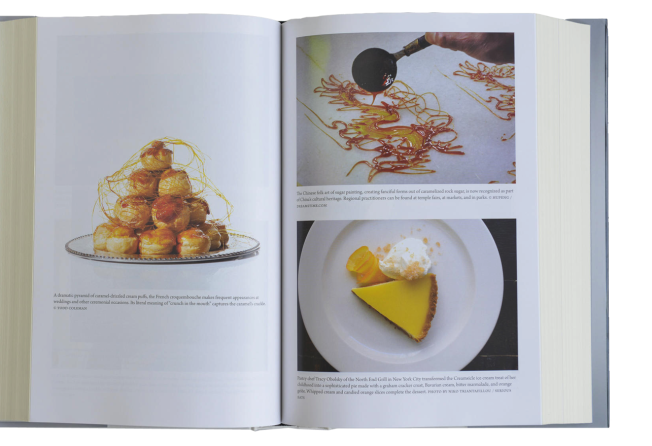
Food book review: The Oxford Companion to Sugar and Sweets offers encyclopaedic insight into its subject
Susan Jung

Like the other Oxford Companion books, whatever the subject, this volume is impressive for its scope. The nearly 900-page encyclopaedia has close to 600 entries by 265 contributors, who include not only pastry chefs, restaurateurs, food historians and cookbook writers, but also neuroscientists, anthropologists and chemists.
The appeal of sugar is universal: sweetness is one of the five basic tastes, and it's almost certainly the most accessible. In the foreword, Darra Goldstein writes, "[Sweetness], unlike salt, sour or bitter, seems, when experienced, to evoke a desire for more of the same in nearly everyone. And the memory of sweet is easily awakened; the desire can become patterned, habitual … Sugar's easy acceptance into nearly all cuisines occurred because its taste was so singularly pure."

But, she writes, sugar does not have a sweet history. "Since it was linked for at least five centuries to the pain and suffering of millions of human beings, I have long thought of sugar's sweet thread as red in colour - the colour of blood. During the long struggle against the slave trade and slavery, blood was in fact the liquid the abolitionists came to invoke to depict the terrible work of men and women in chains: a teaspoonful of sugar for so many drops of blood … The crop that benefited the slave owners in the Americas most, and the one that used the largest number of slaves, was sugarcane … Though sugar can be cast into marvellous forms, it has historically cast people into thralldom - not only addiction, that bondage to excess, but also slavery …
"Such cruelties are not ensconced in the past, however. The damage continues in the child labour used in harvesting cacao beans, in the sugar-heavy diet that undermines health in African American communities, and in the stereotypes still associated with certain forms of sweets … How to create a compendium that would bring all this together, to celebrate the allure of things sweet while recognising the despicable aspects of human activity; to laud sugar's ability to inspire creativity and technological innovation while also acknowledging its detrimental effects?" Heavy stuff.
The subjects begin with a la mode - focusing not on the translation from the French of "in the current fashion" but on the American use of the term, which means the addition of a scoop of ice cream, usually as an accompaniment to pie. It ends with zuppa inglese, or "English soup" - the Italian version of trifle. In between, the subjects are equally wide ranging: advertising, akutuq ("known by outsiders as Eskimo ice cream", the "indigenous dish [one part hard fat, one part polyunsaturated oil and four parts protein or plant material] has been the culinary lifeblood of Natives in North America's Arctic for 600 generations"), bean paste sweets, breakfast cereal, Lunar New Year, convent sweets, filo, gumball machines, linzer torte, pandanus, Ramadan, sexual innuendo ("has coupled sweetness with love and sexuality since ancient times") and Valentine's Day.
The Oxford Companion to Sugar and Sweets edited by Darra Goldstein